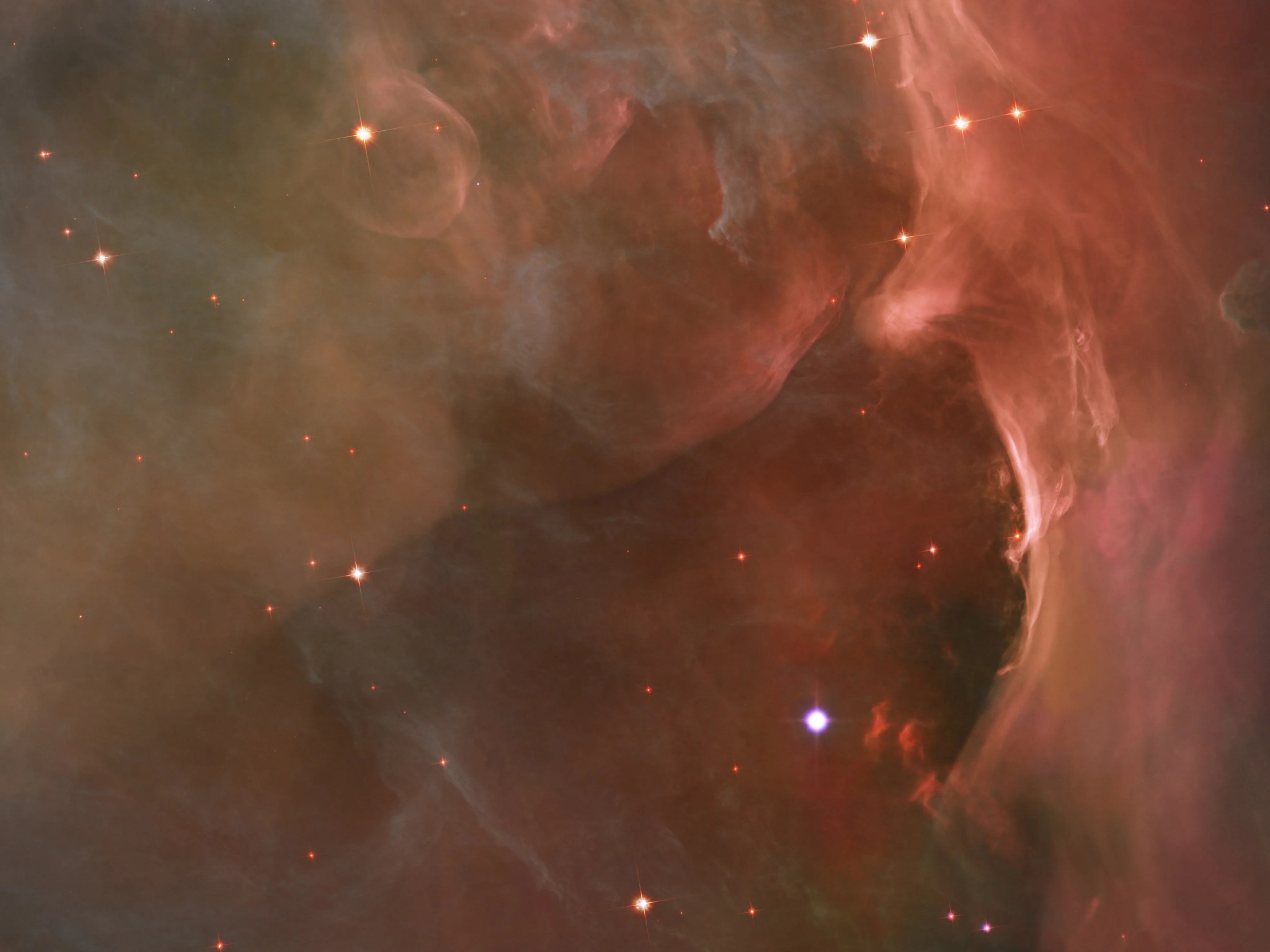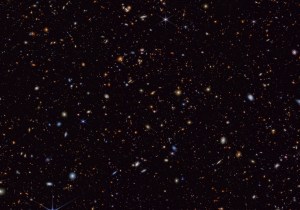This glowing region reveals arcs and bubbles formed when stellar winds - streams of charged particles ejected by the Trapezium stars - collide with material in the Orion Nebula.
This crisp image is part of a tapestry of star formation that varies from jets fired by stars still embedded in their dust and gas cocoons to disks of material encircling young stars that could be the building blocks of future solar systems, taken from a mosaic containing a billion pixels by Hubble's Advanced Camera for Surveys. The resulting image uncovered thousands of stars never seen before in visible light. Some are merely one-hundredth the brightness of previously viewed Orion stars.
Among the stars Hubble spotted for the first time in visible light in Orion were young brown dwarfs and a small population of possible binary brown dwarfs (two brown dwarfs orbiting each other). Brown dwarfs are so-called "failed stars." These cool objects are too small to be ordinary stars, because they cannot sustain nuclear fusion in their cores the way our sun does. Comparing the characteristics of newborn stars and brown dwarfs in their natal environment provides unique information about how they form.
Image credit: NASA, ESA, M. Robberto (Space Telescope Science Institute/ESA) and the Hubble Space Telescope Orion Treasury Project Team































